Archive
If I Checkout My Own Groceries Why Am I Not Being Paid or at Least Given a Discount?
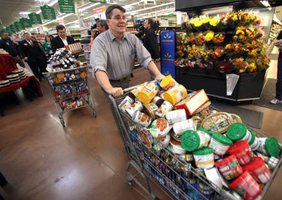
Foodie or regular shopper. Shopping solo, with a wing man or you have the whole bloody family with you. Let’s face it by the time you have selected your items, run the gauntlet of the perishable departments and pole vaulted over 2 dozen product displays strategically located in those narrow store aisles you the shopper are ready to get the heck out of the store. Now there is the rub. As you swiftly move across the front of your local supermarket pushing your loaded shopping basket with bad wheels frantically looking for the friendly face of a cashier to take the burden of checking out and bagging your purchases off of you suddenly you realize that there are no friendly faces available. Your choice is to wait in a long line behind other shoppers who have populated the 2 or 3 checkout lanes that are actually staffed at that particular moment in time or check your grocery purchases out yourself. Please note that there are now hybrid alternatives to the self-checkout of your groceries including a scan as you go device however in this post we will stick to the either or choice dilemma for ringing up your groceries.
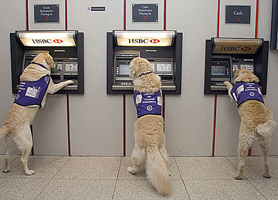
Some pundits might at this point begin to draw comparisons between the similarities of the history of retail banking ATM’s and self-checkout registers in the supermarket. I will briefly say that yes years ago one had to go into a bank branch to make deposits and make withdrawals. Waiting on-line was the norm however I believe the staffing levels in the banks back then were at a much higher level than let’s say a funeral home information booth at a run for life marathon. ATM’s at first allowed the consumer to have access to the cash in their respective accounts 24 hours a day 7 days a week. Yes this was a win for the consumer. No real heavy lifting here so to speak and no extra charges or fees. As time went by did the banks profit by reducing their branch staffing levels? Yes. Later as the consumers need for cash lessened even the ATM’s began to lose some of its luster in the eyes of the banking consumer. The two situations are different as I will now explain within the balance of this post.
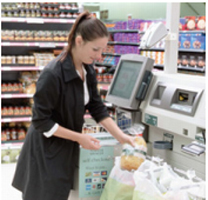
The basic point to be made in defense of the title of this post is that any customer in any supermarket that scans, bags and pays for their supermarket product purchases is saving that supermarket money by reducing the stores labor expenses. Yes a weak case can be made that with the initial capitalized costs of these self-checkout registers, $25 to $60 thousand each, along with their annual operating costs, there is no savings to the store. Again some might suggest that these upfront cost are more expensive than what it would take to staff a regular register with an employee and that the reason that stores deploy self-checkouts is really because of customer service demands. Well let me set everyone straight on the manned register versus self-checkout register expense point. It is my professional opinion, based on years of experience, that the majority of self-checkout register systems in use in today’s supermarket are less expensive to operate than a register manned by an employee. There is no other reason why the industry has embraced these machines except for the fact that it reduces their labor expenses.
Okay point number two. It is a fallacy to believe that supermarket chains, operators and business owners implement self-checkout registers because of the need to provide customer service. Let’s stop for a moment and revisit that last sentence. Now that we have taken a moment to digest this broad claim of mine let’s take a closer look at it.
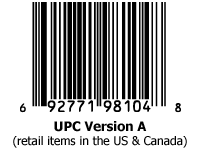
Once again if we all get into the proverbial time machine and go back to late 1970’s or early 1980’s we would see that most supermarkets and grocery stores did not have cash registers that scanned the bar codes or the UPC codes on products. Yes at that point in time a number of national and local chains had begun rolling out scanning cash register systems in their stores because the use of this technology would certainly reduce the time it took to ring up a customers order which in turn was a good thing for customer service. No one disagreed with this line of thought. One of the downsides in implementing bar code scanning in a supermarket was the upfront capital costs. Outside of the necessary electrical and communications wiring requirements, along with in most cases the checkout stands themselves which had to be replaced as well, a POS or Point of Sale cash register system could run as much as $10,000 per lane not counting the cost of back office support systems, hardware maintenance and weekly information updates. There were additional benefits to the retailer as well what with availability of sales and profitability reports by product and/or department. Detailed sales analysis in the supermarket at store level had finally arrived. Better and more efficient inventory levels were sure to follow, at least some thought so anyway.
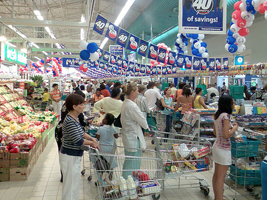
Okay so POS scanning systems slowly made their way into most main stream supermarket throughout the 1980’s and early 1990’s. Some more progressive thinking small independent supermarket operators also adopted this product scanning technology early on when the larger chains were implementing it but by the early 1990’s pretty much all supermarkets had either or where in the process of installing these new “computer” type cash register systems in their stores. They market was forcing all retailers to do this because the customer perceived this type of cash register system as a way to check out quickly at the end of their shopping trip saving them valuable time. Once again retailers benefited from this new cash register technology as well. The belief was that a cashier manning a POS scanning cash register could check out more customers per hour than a cashier who rang up each product by price. With less cashiers required to serve the customer at the front of the store than the labor savings achieved there meant more money/profit going to the bottom line. Of course there were many other benefits for a retailer implementing this technology but that discussion could fill a couple of posts on this blog and is not germane to this particular one.
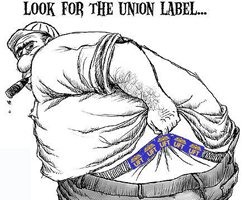
A small side note here back when bar code scanning systems were being implemented in the U.S. supermarket industry labor unions were up in arms about industry management using this new technology. The loss of union jobs was obviously a major reason for their position on challenging the use of these systems for it would lead to lower staffing levels in the store therefore less jobs for their members. Later when self-checkout cash registers began to be implemented in supermarkets there was even less hyperbole emanating from the unions concerning the loss of union jobs because of the reduction in their overall influence in the labor market.
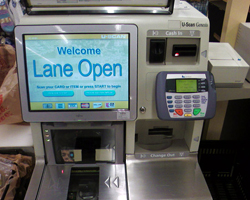
Okay so we can that in bringing bar code scanning cash registers into the supermarket the retail industry had served up improved customer service to their shoppers and at the same time achieved labor savings along with now having access to more detailed inventory/sales reports. To me this sounded like a win-win situation for everyone except organized labor. So now let’s take a closer look at the implementation of self-checkout cash register systems in the U.S. supermarket industry.
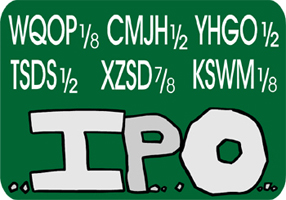
Even with the reduction in the presence and strength of organized labor in the U.S. supermarket industry labor costs were one of the three perceived menaces of profitability in the supermarket industry. The others, in no particular order, were the costs of goods or the how much the retailer paid for the products that they sold to their customers. The last threat was the cost of utilities services in a store. As some of you might remember from an earlier posts I believe it was a study by the University of Iowa that stated that 5% of the total consumption of electricity in the U.S. is by supermarkets. At the same time as the implementation of self-checkout cash registers the U.S. supermarket industry was going through a period of consolidation. Larger U.S. national chains were buying up regional supermarket chains. Foreign supermarket chains were buying up U.S. regional chains. Investors were demanding an even higher return on their investments as the technology industry boomed. From a historical standpoint most successful supermarkets of the day averaged a 1.7% net profit margin while the really successful ones averaged 2% or slightly higher of a net profit.
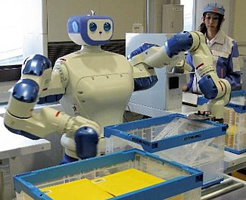
Retail technology vendors began to tease the CEO’s and CFO’s of the supermarket industry by peddling a potential cure for the increasing costs of labor in their checkout operations. This magic pill was the self-checkout cash register system. Just imagine company executives having an employee that never calls in sick, never requires health insurance, works without a break and never asks for a raise they chortled. Remember also that there is no possible way that these mechanical workers will ever ask to join a labor union. Of course these technology vendors had to convince these executives to swallow a tremendously high level of capital expenditures to achieve this labor cost nirvana but they also had a backup plan to get them on board. This plan was to pitch these new mechanical workers as a form of customer service! Yes these devices would be something that customers would be demanding, especially as these retail executives continued to trim the number of workers at the front of their respective operations, so everyone shouted with glee as they drank the Kool Aid.
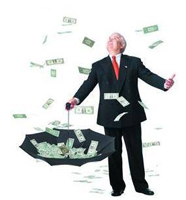
Obviously I have a certain predisposition to the issue of whether the retail food industry implemented self-checkout cash register systems for labor savings benefits or for customer service reasons – these two reasons are mutually exclusive. As the line in one particular movie went, sorry Kevin Coupe and Mike Sansolo for using the movies for business lesson, “do not piss on my back and tell me that it is raining”.

As a consumer just think of it. You are now ringing up the products that you are purchasing from the store. After ringing them up you are then putting these products in some type of bag that if applicable you will put back in your shopping cart and then take to your vehicle. The first two tasks that were normally done by the supermarket cashier is now being done by the shopper therefore saving the retailer labor costs. If there was a real human ringing up your purchases then there might possibly be an exchange of pleasantries between the two parties along with the potential of a retailer-customer relationship bond being formed. In some cases this bond could contribute to the customer loyalty factor that retailers crave but we will leave this subject on the side of the road for now.
So the point that I am making in the title of this particular post rings true. If I the customer am now doing the work that some employee in a store use to do then why am I not being compensated for my free labor in the form of a discount on my order or a credit on my next one. It is insulting from a customer service standpoint and it is just another example of how businesses today squander marketing and increased sales opportunities by implementing poorly thought out strategies. It is also indicative as to how supermarket retailers view their customers as a whole. Is it a pain to go into a store and do one’s shopping only to find out that there are only a few manned cash registers in which to checkout at? Of course it is. However to be herded over to the self-checkout registers, like lemmings to the sea, is just plain insulting. Worse yet is being told by the retailer that the only reason that they have these type of checkout systems is because that is what we the consumer clamored for. That is simply a lie.
TBC in another Post
AB
Copyright @ 2010 Supermarket Stories
Recent Posts
Categories
Archives
- November 2010 (2)
- October 2010 (10)
Calendar of Posts
| S | M | T | W | T | F | S |
|---|---|---|---|---|---|---|
| 1 | ||||||
| 2 | 3 | 4 | 5 | 6 | 7 | 8 |
| 9 | 10 | 11 | 12 | 13 | 14 | 15 |
| 16 | 17 | 18 | 19 | 20 | 21 | 22 |
| 23 | 24 | 25 | 26 | 27 | 28 | 29 |
| 30 | ||||||